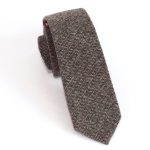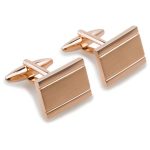In the world of men’s fashion, few accessories are as iconic and versatile as the necktie. From its origins in military regalia to its modern-day status as a symbol of professional elegance, the tie has remained a cornerstone of refined style for centuries. Whether you’re dressing for a formal event or adding a touch of sophistication to your everyday attire, the right tie can elevate your look and make a powerful statement about your personality and taste.
A Brief History
The history of the necktie is as rich and varied as the patterns that adorn its fabric. Its origins can be traced back to 17th-century Europe, where Croatian mercenaries serving in France caught the eye of King Louis XIV with their distinctive knotted neckerchiefs. Inspired by this novel fashion statement, the king adopted the style and dubbed it the “cravate,” laying the groundwork for what would become the modern necktie.
Over the centuries, the tie evolved from a simple piece of cloth worn for practical purposes into a symbol of status and refinement. In the 19th century, the Industrial Revolution brought about advancements in textile manufacturing, allowing for a wide array of colors, patterns, and fabrics to be used in tie production. Today, the tie continues to be a staple of men’s fashion, with endless options available to suit every taste and occasion.
Styles and Materials
Ties come in a variety of styles, ranging from classic silk neckties to more casual options like knit ties and bow ties. Silk ties are the most traditional choice, prized for their luxurious texture and elegant drape. They are available in a wide range of colors and patterns, from timeless solids and stripes to bold prints and intricate designs.
For a more relaxed look, knit ties offer a laid-back alternative with their textured fabric and casual vibe. Bow ties, on the other hand, exude old-world charm and sophistication, making them a popular choice for formal events and black-tie affairs.
When it comes to materials, silk reigns supreme as the fabric of choice for ties due to its lustrous sheen and luxurious feel. However, ties can also be made from other materials such as cotton, wool, and linen, each offering its own unique texture and aesthetic appeal.
The Art of Tying a Tie
While wearing a tie may seem straightforward, mastering the art of tying it properly can take some practice. The most common knot is the four-in-hand, characterized by its asymmetrical shape and versatility. Other popular knots include the half-Windsor and full-Windsor, which are more substantial and formal in appearance.
Regardless of the knot you choose, the key is to achieve a balanced and proportionate look that complements your attire and physique. Experiment with different knots and techniques until you find the one that suits you best, and don’t be afraid to embrace your own personal style in the process.




